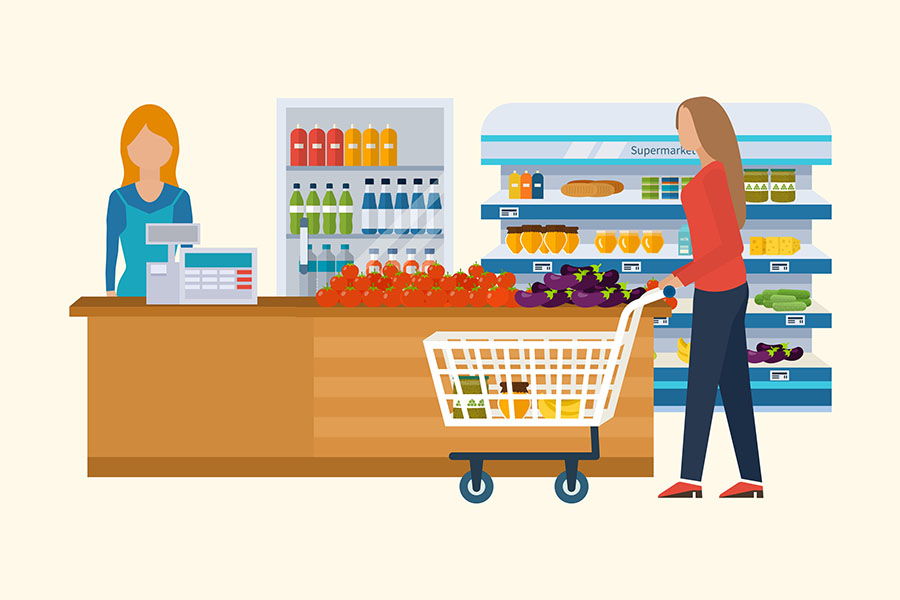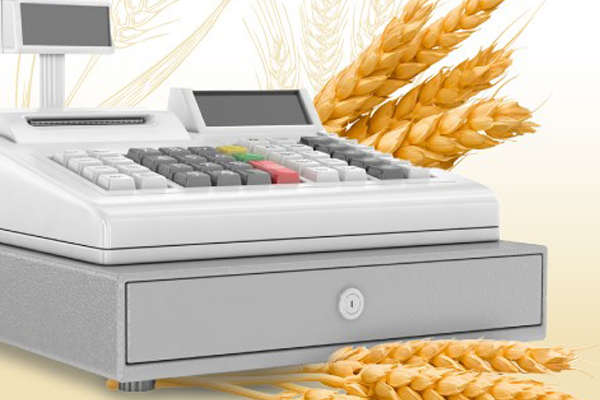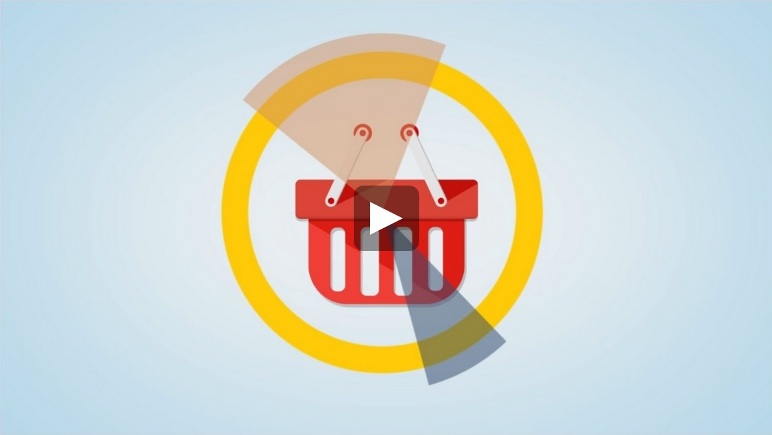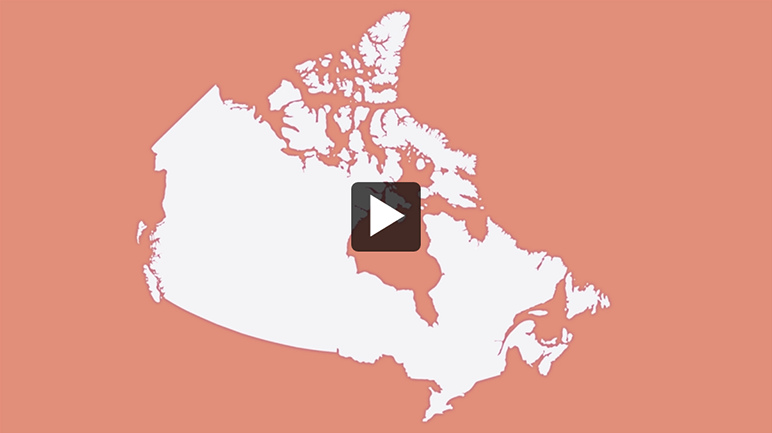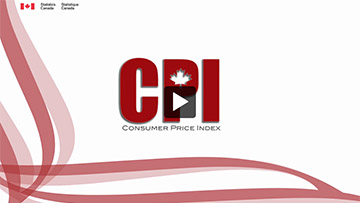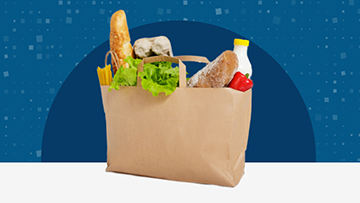Integrated Business Statistics Program (IBSP)
This guide is designed to assist you as you complete the Annual Capital and Repairs Expenditures Survey: Expenditures for 2018 (Long form by function).
Your answers are confidential.
Statistics Canada is prohibited by law from releasing any information it collects which could identify any person, business, or organization, unless consent has been given by the respondent or as permitted by the Statistics Act.
Statistics Canada will use information from this survey for statistical purposes.
Table of contents
Reporting period information
For the purpose of this survey, please report information for your 12 month fiscal period for which the final day occurs on or between April 1, 2018 - March 31, 2019.
Here are twelve common fiscal periods that fall within the targeted dates:
- May 1, 2017 to April 30, 2019
- June 1, 2017 to May 31, 2018
- July 1, 2017 to June 30, 2018
- August 1, 2017 to July 31, 2018
- September 1, 2017 to August 31, 2018
- October 1, 2017 to September 30, 2018
- November 1, 2017 to October 31, 2018
- December 1, 2017 to November 30, 2018
- January 1, 2018 to December 31, 2018
- February 1, 2018 to January 31, 2019
- March 1, 2018 to February 28, 2019
- April 1, 2018 to March 31, 2019
Here are other examples of fiscal periods that fall within the required dates:
- September 18, 2017 to September 15, 2018 (e.g., floating year-end)
- June 1, 2018 to December 31, 2018 (e.g., a newly opened business)
Reporting dollar amounts
- all reported amounts must be rounded to the nearest thousand Canadian dollars (eg $ 6,555,444.00 rounded to $ 6,555);
- exclude sales tax;
- the best estimate is acceptable if you do not have specific numbers;
- If you have no capital expenditures, please write "0".
Definitions
What are Capital Expenditures?
Capital Expenditures are the gross expenditures on fixed assets for use in the operations of your organization or for lease or rent to others. Gross expenditures are expenditures before deducting proceeds from disposals, and credits (capital grants, donations, government assistance and investment tax credits).
Fixed assets are also known as capital assets or property, plant and equipment. They are items with a useful life of more than one year and are not purchased for resale but rather for use in the entity's production of goods and services.
Examples are buildings, vehicles, leasehold improvements, furniture and fixtures, machinery, and computer software.
Include:
- Cost of all buildings, engineering structures, machinery and equipment which normally have a life of more than one year and are charged to fixed asset accounts
- Modifications and major renovations
- Capital costs such as feasibility studies, architectural, legal, installation and engineering fees
- Subsidies used to fund capital expenditures
- Capitalized interest charges on loans with which capital projects are financed
- Work done by own labour force
- Additions to capital work in progress
Exclude:
- business acquisitions
- transfers and write offs
How to Treat Leases
Include:
- Fixed assets acquired as a lessee through either a capital or financial lease;
- Fixed assets acquired for lease to others as an operating lease.
Exclude:
- assets acquired for lease to others, either as a capital or financial lease.
Operating lease: The lessor bears the risk of ownership and retains a significant "residual" economic interest in the leased property. The lessee has the right to temporary use of the property, for a term shorter than the economic life of the property, in exchange for regular payments. At the end of the lease, the lessee has the option of purchasing the property at fair market value.
Capital or financial lease: These leases are similar in that the lessor in effect finances the "purchase" of the leased property by the lessee and retains a security interest in the leased property. The lessee retains the leased property for substantially all of its economic life. Usually, at the end of the rental period, he has the option to buy the property at a reduced price.
Land: Capital expenditures for land must include all costs associated with the purchase of land that is not amortized. Improvements to land are to be reported under "Non-residential construction".
Work in Progress: Work in progress represents the costs accumulated since the start of capital projects and which are intended to be capitalized upon completion.
If a major project has been launched or an existing project has been expanded, please indicate the nature, location and, if applicable, the name (s) of the project in the comment section of the questionnaire.
Type of activity (function): The type of activity refers to the function (the economic or social goal or purpose) of capital and repair expenditures incurred during the year. It is the service for others that it serves to support and not its internal
Examples:
A capital expense for the acquisition of office furniture for a hospital.
The function of this acquisition is hospital services.
A capital expense for the construction of a waste disposal facility at a school for its own use.
The function of this expense is teaching.
Residential Construction:
A building or residential building refers to a building used or intended for residential purposes on a permanent or non-permanent basis. Residential buildings normally provide self-contained bathroom and kitchen units to the occupants of each dwelling.
A building for which the majority of housing units have a shared bathroom and kitchen is classified as non-residential.
Include capital expenditures incurred during the reporting period for residential construction (contract or by your own employees).
Include the residential portion of multipurpose complexes and townsites.
Exclude buildings that have dwellings without bathrooms or self-contained or exclusive-use kitchens (e.g, some student or senior residences, short-term shelters), or service-related expenses.
Affordable Housing: Include government-subsidized rental housing. Exclude short-term shelters and single-use, non-bathroom, self-contained dwellings and service-related expenses (these are reported under non-residential construction).
Non-Residential Construction:
This group includes non-residential buildings (buildings). A non-residential building or building refers to a construction that is used or intended for non-residential purposes, namely for industrial, commercial or institutional purposes, including the provision of services. Include capital expenditures incurred during the reporting period for non-residential buildings and engineering works (on a contract basis and / or by your own employees) whether for your own use or lease.
A building for which housing units have a shared bathroom and kitchen is classified under this group. Building structures should be classified as an asset according to their main use, unless it is a multipurpose structure in which we would like you to separate the components. The cost of any machinery or equipment that is an integral or integrated part of the structure (elevators, heating equipment, sprinkler systems, environmental control systems, intercom systems, etc.) must be declared as part of the structure this structure and the landscaping and associated parking lots.
Include:
- Manufacturing plants, warehouses, office buildings, shopping centres, etc.;
- Roads, bridges, sewers, electric power lines, underground cables, etc.;
- The cost of demolition of buildings, land servicing and site preparation;
- Leasehold and land improvements.
- Additions to work in progress;
- Town site facilities such as streets, sewers, stores and schools;
- Buildings that have accommodation units without self-contained or exclusive use of bathroom and kitchen facilities (e.g., some student and senior citizen residences) and associated expenditures on services;
- All preconstruction planning and design costs such as engineer and consulting fees and any materials supplied to construction contractors for installation, etc.
Machinery and Equipment
Capital expenditures incurred during the reporting period for machinery and equipment, whether for your own use or for lease or rent to others. Machinery and equipment are generally housed in structures and can be removed or replaced without significantly altering the structure.
Include:
- Automobiles, trucks, professional and scientific equipment, office and store furniture and appliances;
- Computers (hardware only), broadcasting, telecommunications and other information and communication technologies equipment;
- Motors, generators, transformers;
- Any capitalized tooling expenses;
- Acquisitions to work in progress;
- Progress payments paid out before delivery in the year in which such payments are made;
- Any balance owing or holdbacks should be reported in the year the cost is incurred.
New Capital Assets: Enter new capital expenditures, including the portion of work in progress for the current year. Include imports of used capital assets as they represent newly acquired assets for the Canadian economy.
Canadian Used Capital Assets: Our survey is designed to measure separately the acquisitions of new and used capital assets across the Canadian economy. The acquisition of used capital does not increase the total capital stock, but simply transfers it to the Canadian economy. Indicate the acquisition of used assets separately in this column.
Renovation, Refurbishment, Refurbishment or Refurbishment, Restoration: Indicate capital expenditures for improvements, renovations, repairs, refurbishments, overhauls, or restoration. Exclude routine repair or maintenance expenses.
Non-Capitalized Repair and Maintenance expenses
This refers to the repair and maintenance of property as opposed to the acquisition or renovation of capital assets.
Non-capitalized repair and maintenance expenditures are that portion of current or operating expenditures charged against revenue in the year incurred and made for the purpose of keeping the stock of fixed assets in good working condition during the life originally intended.
Repair and maintenance allow such fixed assets to operate at output producing capacity during the asset life without undue amounts of down time (preventive function). A second purpose is the returning of any portion of the stock of fixed assets into a state of good working condition after any malfunctioning or reduced efficiency for whatever reason (curative function) short of replacement of such fixed assets or adding significantly to their life or productive efficiency.
Maintenance expenditures on buildings and other structures may include the routine care of assets such as janitorial services, snow removal and/or salting and sanding by the firm's own employees or persons outside the firm's employ.
Maintenance expenditures on machinery and equipment may include oil change and lubrication of vehicles and machinery.
Include:
- the gross value of non-capitalized repairs and maintenance expenditures on non-residential buildings, other construction or machinery and equipment;
- the value of repairs made by your own workforce, as well as payments to outside repairers;
- building maintenance services: janitorial services, snow removal, abrasive application, etc. ;
- maintenance of equipment: oil changes and lubrication of vehicles or other machinery, etc.
Source of funding breakdown - Internal costs
Sources of funding for capital expenditures include grants, donations, credit and venture capital from external sources, as well as internal funding.
Value of the work performed by the business on its own account: These expenses include the value of all materials and equipment provided without charge to contractors, all architectural, engineering and consulting fees and those paid for other similar services.
Internal costs of construction or development (such as equipment and labor): which are capitalized in the cost of assets (such as installation by own employees or assembly of fixed assets, personnel systems and software development). Include all materials and supplies provided free of charge to contractors and all fees for architects, engineers and consultants and services.
Include all materials and supplies provided free to contractors and all architects, engineering and consultants fees and similar services.
Salaries and wages: Indicate the total value of salaries and wages paid to your employees. Wages and salaries are gross earnings before deductions, such as income taxes; they include incentive and vacation pay, but exclude benefits.
Materials and Supplies: Report the total cost of materials and supplies used by your employees and those provided free of charge to contractors for reported expenses.
Other Expenses: Other expenses include, for example, insurance premiums, electricity and telephone costs, and applicable architects, lawyers and engineers fees, if applicable the declared expenditure.
Disposal and sale of fixed assets
Selling price: Indicate the total value of the sale of the fixed assets that you sold or sold, even if you gave them in exchange for a credit for the acquisition or purchase of new fixed assets. When land and buildings are sold together, report separately the sale price of the land, along with other land sales.
Gross book value: This value must represent the total capital expenditures for a property at the time of construction or initial purchase or since that time, including all subsequent capital expenditures for retrofit, expansion, etc. Subsidies should not be subtracted.
Age: Indicate the age of the assets at the time of their disposition.
If you have sold or sold similar fixed assets with different working ages, report these separately or combine the data and provide a weighted average age of these assets.
Required Information
This questionnaire is broken up into 6 sections. Below you will find information on the data required to complete each section of the electronic questionnaire. This guide is meant as a resource so that you may gather the necessary information prior to completing the electronic questionnaire.
1) For the fiscal year, you will need to provide the organizations total capital and repair expenditures in (CAN$ '000) for the following:
- Gross capital expenditures, excluding land
- Non-capitalized repair and maintenance expenditures
- Land
As well as providethe total cost of capitalized work in progress (building, other construction, equipment and tools, software) at the end of the reporting period. Note: These capital costs must also be reported as capital expenditures in the year in which they occurred (addition to work in progress for the reporting period).
2) The identification of the functions (the economic or social purpose or purpose) of capital and reparations expenditures incurred during the year and the identification of the assets that were acquired during the year for each function. For each asset shown, expenses are collected as follows:
- New Acquisitions and additions (including usedcapital assets imported)
- Acquisitions of used assets (excluding imports)
- Refurbishment and renovations
- Expected useful life (years).
Note : The list of functions and the associated assets is available below under Functions and associated assets.
3) Source of funding for the total capital expenditures by function. The sources of funding requested are the subsidies, grants and contributions received from each level of government, as well as all other sources combined.
- Grants, subsidies and contributions from municipal, local or regional governments
- Grants, subsidies and contributions from provincial or territorial governments
- Grants, subsidies and contributions from the federal government
- Private, internal and other sources of funding - Include internal funds and funds from sales of goods and services (including user fees), private donations, and developers’ contributions
4) Non-capitalized repair and maintenance expenditures by function. Report the part of operating costs that are incurred to maintain the intended use of non-residential tangible assets (buildings, machinery, computers, etc.). Capital expenditures are excluded.
5) Identification of internal costs capitalized (work performed by the organization’s own labour force). Breakdown of expenditures on own account work (internal work) by salaries and wages, material and supplies and other charges for:
- New non-residential construction including renovation and retrofit
- Non-capitalized construction repair and maintenance expenses
- New machinery and equipment including renovation and retrofit
- Software development capital expenditures
For the categories above, report internal costs for each:
- Salaries and Wages
- Materials and Supplies
- Other charges
6) Identification of assets that were disposed of or sold during the year. For each asset, include the selling price if applicable, gross book value (total accumulated cost) and age.
Note: the list of assets for the reporting of disposals and sales is available under List of assets for disposals and sales.
Functions and associated assets
Road transport
The administration of affairs and services concerning operation, use, construction and maintenance of road transport systems and facilities (roads, bridges, tunnels, parking facilities, etc.).
Includes:
- highways, urban roads, streets, bicycle paths and footpaths
- vehicle and driver licensing
- vehicle safety inspection, size and load specifications for passenger and freight road transport
- regulation of hours of work of bus, coach and lorry drivers, etc.
Excludes:
- road traffic control (see Defense, public order and safety)
- support for road vehicle manufacturers (see Agriculture, forestry, fishing, hunting, mining, manufacturing, and construction)
- construction of noise embankments, hedges and other anti-noise facilities including the resurfacing of sections of urban highways with noise reducing surfaces (see Other community amenities and environmental protection)
- street lighting (see Other health and social protection).
Assets for Road transport
Industrial service buildings and depots
- e.g., maintenance garages, storage areas
Office and administrative buildings
Other buildings, specify:
Highway and road structures and networks
- Include signs, guardrails, lighting, landscaping, sidewalks, bicycle paths, pedastrian lanes, traffic control infrastructure
Bridges
- Include overpasses
Tunnels
Parking lots and parking garages
- Include associated electric car charging stations
Flood protection infrastructure
- e.g., storm sewers, drains, pipes, dams, reservoirs
Other transportation infrastructure
- e.g., motor vehicle inspection stations, weigh stations
Other infrastructure, specify:
Medium and heavy-duty trucks
- Include road vehicles designed primarily for transportation of good with a gross vehicle weight rating of more than 5 tonnes.
Materials handling trucks and tractors
- Include transfer cars for material handling, wheelbarrows, forklifts.
- Exclude bulldozers, front-end loaders, earth moving machinery (see Construction machinery and equipment).
Public transit
The administration of affairs and services concerning operating, use, construction and maintenance of local and suburban mass passenger transit systems. Such systems may involve the use of one or more modes of transport including ferry services, light rail, subways and streetcars, as well as buses and bus terminals. These establishments operate over fixed routes and schedules, and allow passengers to pay on a per-trip basis.
Excludes:
- passenger transportation associated with scenic or sightseeing activities (see Tourism)
- transportation services without fixed routes and schedules.
Assets for Public transit
Industrial service buildings and depots
- e.g., maintenance garages, storage areas
Passenger terminal buildings and airports
- e.g., heliports
Service stations
- e.g., gas stations, automotive repair shops
Office and administrative buildings
Other buildings, specify:
Parking lots and parking garages
- Include associated electric car charging stations
Transit shelters
Highway and road structures and networks
- Include signs, guardrails, lighting, landscaping, sidewalks, bicycle paths, pedestrian lanes, traffic control infrastructure
Bridges
- Include overpasses
Tunnels
Railway lines and tracks, including light-rail
- Include signs, lighting, security and traffic control infrastructure
Other transportation infrastructure
- e.g., motor vehicle inspection stations, weigh stations
Waste disposal facilities
Other infrastructure, specify:
Buses
- e.g., vans of a seating capacity of 10 persons or more, electric trackless trolley coaches
Special-purpose vehicles
- e.g., trucks fitted with elevator platforms, tow trucks
Locomotives, railway rolling stock, and rapid transit equipment
Ferries and boats
Medium and heavy-duty trucks
- e.g., road vehicles designed primarily for transportation of good with a gross vehicle weight rating of more than 5 tonnes
Materials handling trucks and tractors
- e.g., lifting machinery, forklift trucks
Other materials handling equipment
- e.g., winches, aerial work platforms, hoists, conveyors
Other transportation equipment
- e.g., all-terrain vehicles
Navigational and guidance instruments
- e.g., ultrasonic detecting equipment, radio navigational aid, radio direction finders
Broadcast, studio, alarm, and signalling equipment
- e.g., traffic control equipment, surveillance cameras
Telephone and data communications equipment
- e.g., fax machines, telephone switching, local area routers, smartphones
Measuring, control and scientific instruments
- e.g., counting devices
Powered hand tools
Computers and peripherals
Office furniture
Furniture and fixtures
- Exclude office furniture
Passenger cars, light-duty trucks, vans and SUVs
Other machinery and equipment, specify:
Pre-packaged software
Custom-designed software
- e.g., on contract and in-house development
Other transport not elsewhere classified (n.e.c)
The administration of affairs and services concerning operation, use, construction and maintenance of inland, coastal and ocean water, railway, air and other transport systems and facilities.
Includes:
- harbours, docks, canals, bridges, tunnels, channels, breakwaters, piers, wharves, etc.
- water, rail or air transport navigation aids and equipment (radio, satellite, etc.)
- emergency rescue and towing services
- registration, licensing and inspection of vessels and crews
- regulations concerning passenger safety and freight security.
Excludes:
- shipbuilders and rolling stock manufacturers (see Agriculture, forestry, fishing, hunting, mining, manufacturing, and construction)
- construction of noise embankments, hedges and other anti-noise facilities including the resurfacing of sections of urban highways with noise reducing surfaces (see Other community amenities and environmental protection)
- ferry service with fixed routes and schedules that charge a per-trip fee (see Public transit).
Assets for Other transport n.e.c
Passenger terminal buildings and airports
- e.g., heliports, railway stations, boat passenger terminals
Industrial service buildings and depots
- e.g., maintenance garages, storage areas
Office and administrative buildings
Other buildings, specify:
Highway and road structures and networks
- Include signs, guardrails, lighting, landscaping, sidewalks, bicycle paths, pedestrian lanes, traffic control infrastructure
Parking lots and parking garages
- Include associated electric car charging stations
Railway lines
Runways
- e.g., airfields, heliport terminal, tarmac, runway lighting
Bridges
- Include overpasses
Tunnels
Marinas
Seaports and harbours
Canals and waterways
Other marine infrastructure
Other transportation infrastructure
- e.g., motor vehicle inspection stations, weigh stations
Other infrastructure, specify:
Aircraft
Locomotives, railway rolling stock, and rapid transit equipment
Non-militrary ships, barges and platforms
- e.g., ferry boats, tug boats
Other boats and personal watercraft
Buses
- e.g., vans of a seating capacity of 10 persons or more, electric trackless trolley coaches
Passenger cars, light-duty trucks, vans and SUVs
Special-purpose vehicles
- e.g., street flushers, tow trucks, vehicle mounted snow plows
Materials handling trucks and tractors
Other materials handling equipment
- e.g., winches, aerial work platforms, hoists, conveyors
Navigational and guidance instruments
- e.g., ultrasonic detecting equipment, radio navigational aid, radio direction finders
Broadcast, studio, alarm, and signalling equipment
- e.g., traffic control equipment, surveillance cameras
Measuring, control and scientific instruments
- e.g., counting devices, parking meters
Televisions and other audio and video equipment
Computers and peripherals
Water supply
The administration of water supply affairs.
Includes:
- assessment of future needs and determination of availability
- supervision and regulation of all facets of potable water supply including water purity, price and quantity controls
- construction or operation of water supply systems
- production and dissemination of general information, technical documentation and statistics on water supply affairs and services
- activities to support the operation, construction, maintenance or upgrading of water supply systems.
Excludes:
- irrigation systems (see Agriculture, forestry, fishing, hunting, mining, manufacturing, and construction)
- collection and treatment of waste water (see Waste water management).
Assets for Water supply
Industrial service buildings and depots
- e.g., maintenance garages, storage areas
Office and administrative buildings
Other buildings, specify:
Water filtration plants
Water supply infrastructure
- e.g., aqua ducts mains, trunk and distribution mains, water reservoirs, water wells, fill stations
Other infrastructure, specify:
Water treatment equipment
Filters and strainers for fluids and fluid power systems
Pumps and compressors
Boilers, metal tanks, industrial valves and seals
Measuring, control, and scientific instruments
Broadcast, studio, alarm, and signalling equipment
Televisions and other audio and video equipment
Computers and peripherals
Office furniture
Other machinery and equipment, specify:
Pre-packaged software
Custom-designed software
- e.g., on contract and in-house development
Industrial service buildings and depots
- e.g., maintenance garages, storage areas
Office and administrative buildings
Other buildings, specify:
Community amenities not elsewhere classified (n.e.c)
The administration of housing development affairs and services, promotion, monitoring and evaluation of housing development activities whether or not the activities are under the auspices of public authorities. Also included are activities such as formulation, administration, coordination and monitoring of overall policies, plans, programmes and budgets relating to housing and community amenities, preparation and enforcement of legislation and standards relating to housing and community amenities, production and dissemination of general information, technical documentation and statistics relating to housing and community amenities.
Includes:
- slum clearance related to provision of housing
- acquisition of land needed for construction of dwellings
- administration of zoning laws and land-use and building regulations
- construction or purchase and remodelling of dwelling units for the general public or for people with special needs
- planning of new communities or of rehabilitated communities
- planning the improvement and development of facilities such as housing, industry, public utilities, health, education, culture, recreation, etc. for communities
- preparation of schemes for financing planned developments
- production and dissemination of general information, technical documentation and statistics on community development affairs and services
- development and regulation of housing standards
- production and dissemination of public information, technical documentation and statistics on housing development affairs and services
- activities to support the expansion, improvement or maintenance of the housing stock.
Excludes:
- administration, development and regulation of construction standards (see Agriculture, forestry, fishing, hunting, mining, manufacturing, and construction)
- activities to help households meet the cost of housing, such as the provision of affordable housing (see Social protection).
- plan implementation, that is, the actual construction of housing, industrial buildings, streets, public utilities, cultural facilities, etc. (classified according to function).
Assets for Community amenities n.e.c
Other residential buildings
- e.g., buildings that provide accommodation units with self-contained and exclusive use of bathroom and kitchen facilities to the occupants of each unit
Office and administrative buildings
Industrial laboratories, research and development centres
Industrial service buildings and depots
- e.g., maintenance garages, storage areas
Other buildings, specify:
Parking lots and parking garages
- Include associated electric car charging stations
Highway and road structures and networks
- Include signs, guardrails, lighting, landscaping, sidewalks, bicycle paths, pedestrian lanes, traffic control infrastructure
Other infrastructure, specify:
Passenger cars, light-duty trucks, vans and SUVs
Special-purpose vehicles
- e.g., fire trucks, tow trucks, vehicle mounted snow plows
Powered hand tools
Pumps and compressors
Other transportation equipment
- e.g., all-terrain vehicles
Medical, dental and personal safety supplies
Playground, gymnasium, exercise, and other athletic equipment
Telephone and data communications equipment
- e.g., fax machines, telephone switching, local area routers, smartphones
Televisions and other audio and video equipment
Computers and peripherals
Optical and projection equipment, photocopiers, and office machines
Office furniture
Other machinery and equipment, specify:
Pre-packaged software
Custom-designed software
- e.g., on contract and in-house development
Storm water management
The administration, supervision, inspection, operation or support of rain or storm water management systems, including activities to support the operation, construction, maintenance or upgrading of such systems.
Includes:
- system of collectors, pipelines, conduits and pumps to evacuate any rainwater from the points of generation to either a sewage system or to a point where rain water is discharged to surface water
Assets for Storm water management
Office and administrative buildings
Industrial service buildings and depots
- e.g., maintenance garages, storage areas
Other buildings, specify:
Flood protection infrastructure
- e.g., storm sewers, drains, pipes, dams, reservoirs
Pollution abatement and control
Highway and road structures and networks
- Include signs, guardrails, lighting, landscaping, sidewalks, bicycle paths, pedestrian lanes, traffic control infrastructure
Other infrastructure, specify:
Filters and strainers for fluids and fluid power systems
Water treatment equipment
Pumps and compressors
Special-purpose vehicles
- e.g., trucks for refuse collection
Medium and heavy-duty trucks
Boilers, metal tanks, industrial valves and seals
Measuring, control, and scientific instruments
Broadcast, studio, alarm, and signalling equipment
Televisions and other audio and video equipment
Computers and peripherals
Office furniture
Other machinery and equipment, specify:
Pre-packaged software
Custom-designed software
- e.g., on contract and in-house development
Waste water management
The administration, supervision, inspection, operation or support of sewage systems and waste water treatment, including activities to support the operation, construction, maintenance or upgrading of such systems.
Includes:
- system of collectors, pipelines, conduits and pumps to evacuate any waste water (domestic and other available waste water) from the points of generation to either a sewage treatment plant or to a point where waste water is discharged to surface water
- mechanical, biological or advanced process to render waste water fit to meet applicable environment standards or other quality norms.
Excludes:
- rain water or storm water systems (see Storm water management).
Assets for Waste water management
Industrial service buildings and depot
- e.g., maintenance garages, storage areas
Office and administrative buildings
Other buildings, specify:
Sewage treatment plants
Sewage collection and disposal infrastructure
Flood protection infrastructure
- e.g., storm sewers, drains, pipes, dams, reservoirs
Pollution abatement and control
Other infrastructure, specify:
Water treatment equipment
Filters and strainers for fluids and fluid power systems
Boilers, metal tanks, industrial valves and seals
Pumps and compressors
Measuring, control, and scientific instruments
Medium and heavy-duty trucks
Special-purpose vehicles
- e.g., trucks for refuse collection
Broadcast, studio, alarm, and signalling equipment
Televisions and other audio and video equipment
Computers and peripherals
Office furniture
Other machinery and equipment, specify:
Pre-packaged software
Custom-designed software
- e.g., on contract and in-house development
Waste management
The administration, supervision, inspection, operation or support of waste collection, treatment and disposal systems, including activities to support the operation, construction, maintenance or upgrading of such systems.
Includes:
- collection, treatment and disposal of nuclear waste
- collection of all types of waste, whether selective by type of product or undifferentiated covering all waste
- transport to place of treatment or discharge
- treatment by any method or process designed to change the physical, chemical or biological character or composition of any waste so as to neutralize it, to render it non-hazardous, to make it safer for transport, to make it amenable for recovery or storage or to reduce it in volume
- disposal to final placement of waste for which no further use is foreseen by landfill, containment, underground disposal, dumping at sea or any other relevant disposal method.
Assets for Waste management
Industrial service buildings and depots
- e.g., maintenance garages, storage areas
Office and administrative buildings
Other buildings, specify:
Waste disposal facilities
Sewage treatment plants
Other sewage infrastructure
Other infrastructure, specify:
Materials handling trucks and tractors
Special-purpose vehicles
- e.g., trucks for refuse collection
Medium and heavy-duty trucks
Freight and utility trailers
Other materials handling equipment
Metalworking machinery
Other processing equipment
Heavy-gauge metal containers
- e.g., intermodal
Measuring, control, and scientific instruments
Boilers, metal tanks, industrial valves and seals
Televisions and other audio and video equipment
Computers and peripherals
Office furniture
Other machinery and equipment, specify:
Pre-packaged software
Custom-designed software
- e.g., on contract and in-house development
Other community amenities and environmental protection
The administration, management, regulation, supervision, operation and support of activities such as formulation, administration, coordination and monitoring of overall policies, plans, programmes and budgets for the promotion of environmental protection; the preparation and enforcement of legislation and standards for the provision of environmental protection services, and the production and dissemination of general information, technical documentation and statistics on environmental protection.
This group covers activities relating to ambient air and climate protection, soil and groundwater protection, noise and vibration abatement, protection against radiation, protection of fauna and flora species and habitats, and the protection of landscapes for their aesthetic values.
Includes:
- rehabilitation of abandoned mines and quarry sites
- protection of habitats including the management of natural parks and reserves
- protection of flora and fauna species
- construction, maintenance and operation of monitoring systems and stations (other than weather stations)
- construction of noise embankments, hedges and other anti-noise facilities including the resurfacing of sections of urban highways or railways with noise reducing surfaces
- measures to clean pollution in water bodies
- measures to control or prevent the emissions of greenhouse gases and pollutants that adversely affect the quality of the air
- construction, maintenance and operation of installations for the decontamination of polluted soils and for the storage of pollutant products
- reshaping of damaged landscapes for the purpose of strengthening their aesthetic value
- transportation of pollutant products.
Assets for Other community amenities and environmental protection
Office and administrative buildings
Industrial service buildings and depots
- e.g., maintenance garages, storage areas
Other buildings, specify:
Water filtration plants
Parking lots and parking garages
- Include associated electric car charging stations
Waste disposal facilities
Highway and road structures and networks
- Include signs, guardrails, lighting, landscaping, sidewalks, bicycle paths, pedestrian lanes, traffic control infrastructure
Site remediation services
- e.g., land improvements
Pollution abatement and control infrastructure
Other infrastructure, specify:
Passenger cars, light-duty trucks, vans and SUVs
Medium and heavy-duty trucks
Special-purpose vehicles
Non-military ships, barges and platform
- e.g., ferry boats, tug boats
Boats and personal watercraft
Freight and utility trailers
Filters and strainers for fluids and fluid power systems
Measuring, control and scientific instruments
Computers and peripherals
Office furniture
Other machinery and equipment, specify:
Pre-packaged software
Custom-designed software
- e.g., on contract and in-house development
Defense, public order and safety
The administration, operation and support of fire prevention and fire-fighting services; of law courts, prisons and other places for the detention or rehabilitation of criminals; military or civil defence affairs and services, and of foreign military aid (monitoring of policies as well as preparation and enforcement of legislation relating to defense). Activities such as formulation, administration, coordination and monitoring of overall policies, plans, programmes and budgets relating to public order and safety are included.
Includes:
- workhouses, reformatories, borstals, asylums for the criminally insane, etc.
- operation of parole and probation systems;
- fire-prevention and fire-fighting training programmes;
- mountain rescue, beach surveillance, evacuation of flooded areas, etc.
- land, sea, air and space defence forces
- border and coast guards
- engineering, transport, communication, intelligence, personnel and other non-combat defence forces
- applied research and experimental development related to defence, public order and safety
- legal representation and advice on behalf of government or on behalf of others provided by government
Excludes:
- forces especially trained and equipped for fighting or preventing forest fires (see Agriculture, forestry, fishing, hunting, mining, manufacturing, and construction)
- military schools and colleges where curricula resemble those of civilian institutions even though attendance may be limited to military personnel and their families (see Education)
- administration of war veterans' affairs (see Other health and social protection)
- equipment and facilities for emergency use in the case of peacetime disasters (see Other health and social protection)
- pension schemes for military personnel (see Other health and social protection).
Assets for Defense, public order and safety
Public security facilities
- e.g., prisons, police stations, fire stations, detention centres, court houses
Industrial service buildings and depots
- e.g., maintenance garages, storage facilities, aircraft hangars, aircraft maintenance buildings
Shelters and other collective dwellings
Office and administrative buildings
Schools, colleges, universities and other educational buildings
Industrial laboratories, research and development centres
Warehouses
- e.g., refrigerated storage, freight terminal buildings
Clinics and other medical buildings
Other buildings, specify:
Parking lots and parking garages
- Include associated electric car charging stations
Runways
- e.g., airfields, heliport terminal, tarmac, runway lighting
Highway and road structures and networks
- Include signs, guardrails, lighting, landscaping, sidewalks, bicycle paths, pedestrian lanes, traffic control infrastructure
Flood protection infrastructure
- e.g., pipes, dams, reservoirs
Other sewage infrastructure
Water supply infrastructure
Electric power infrastructure
Other infrastructure, specify:
Furniture and fixtures
- Exclude office furniture
Passenger cars, light-duty trucks, vans and SUVs
Special-purpose vehicles
- e.g., fire trucks, prison vans
Freight and utility trailers
Non-military Aircraft
Non-military ships, barges and platforms
Unmanned aerial vehicles
- e.g., drones
Boats and personal watercraft
Military aircraft
Military ships
Military armoured vehicles
Broadcast, studio, alarm, and signalling equipment
Telephone and data communications equipment
- e.g., fax machines, telephone switching, local area routers, smartphones
Medical, dental and personal safety supplies
Automatic weapons, machine guns, rocket launchers, howitzers, mortars, and other weapons
Include parts
Computers and peripherals
Optical and projection equipment, photocopiers, and office machines
Office furniture
Other machinery and equipment, specify:
Pre-packaged software
Custom-designed software
- e.g., on contract and in-house development
Hospital services
This group covers the services of general and specialist hospitals, the services of medical centres, maternity centres, nursing homes and convalescent homes which chiefly provide in-patient services, the services of military base hospitals, the services of institutions serving old people in which medical monitoring is an essential component and the services of rehabilitation centres providing in-patient health care and rehabilitative therapy where the objective is to treat the patient rather than to provide long-term support.
Includes:
- Hospital day-care and home-based hospital treatment
- hospices for terminally ill persons
- specialized hospitals that provide treatment of a particular condition, disease or class of patient (i.e., tuberculosis, cancer etc.).
Excludes:
- military field hospitals (see Defense, public order and safety)
- surgeries, clinics and dispensaries devoted exclusively to outpatient care (see Health services)
- institutions for disabled persons and rehabilitation centres providing primarily long-term support (see Other health and social protection)
- retirement homes for elderly persons (see Other health and social protection)
- activities related to payments to patients for loss of income due to hospitalization (see Other health and social protection).
Assets for Hospital services
Hospitals
Clinics and other medical buildings
Nursing home units without exclusive kitchen and bath
Industrial service buildings and depots
- e.g., maintenance garages, storage areas
Restaurants and bars
Stores and retail outlets
Office and administrative buildings
Other buildings, specify:
Parking lots and parking garages
- Include associated electric car charging stations
Outdoor recreational facilities
Other infrastructure, specify:
Medical and laboratory equipment
- e.g., medical furnishings and laboratory apparatus
Other medical, dental and personal safety supplies
- e.g., wheelchairs
Other scientific and technical instruments
Furniture and fixtures, except office furniture
Commercial cooking and food-warming equipment
Commercial and service industry machinery and equipment (n.e.c.)
- e.g., commercial laundry machines
Passenger cars, light-duty trucks, vans and SUVs
Special-purpose vehicles
- e.g., ambulances
Broadcast, studio, alarm, and signalling equipment
Boilers, metal tanks, industrial valves and seals
Heating and cooling equipment
- Exclude household appliances
Telephone and data communications
- e.g., fax machines, telephone switching, local area routers, smartphones
Televisions and other audio and video equipment
Computers and peripherals
Optical and projection equipment, photocopiers, and office machines
Office furniture
Sporting and athletic goods
- e.g., exercise equipment, playground equipment
Other machinery and equipment, specify:
Pre-packaged software
Custom-designed software
- e.g., on contract and in-house development
Health except hospital services
This group covers medical, dental and paramedical services delivered to outpatients by practitioners and auxiliaries. The services may be delivered at home, in individual or group consulting facilities, dispensaries or the outpatient clinics of hospitals and the like. Outpatient services include the medicaments, prostheses, medical appliances and equipment and other health-related products supplied directly to outpatients by medical, dental and paramedical practitioners and auxiliaries.
The administration, inspection, operation or support of public health services such as blood bank operation (collecting, processing, storing, shipping), disease detection (cancer, tuberculosis, venereal disease), prevention (immunization, inoculation), monitoring (infant nutrition, child health), epidemiological data collection, family planning services, etc. are also included.
Includes:
- licensing of medical establishments and medical and paramedical personnel
- general and specialized medical clinics
- offices of general and specialist medical practitioners
- dental clinics and dentists
- services of orthodontic specialists
- acupuncturists, chiropodists, chiropractors, optometrists, practitioners of traditional medicine, etc.
- medical analysis laboratories and x-ray centres
- preparation and dissemination of information on public health matters
- outpatient thermal bath or sea-water treatments
- ambulance services (other than ambulance services operated by hospitals)
- formulation, administration, coordination and monitoring of overall health policies, plans, programs and budgets
- provision of vaccines, oral contraceptives, and other pharmaceutical products
- provision of first-aid kits and other medical products
- provision of corrective eyeglasses, hearing aids, orthopaedic footwear, wheelchairs, etc.
- formulation and administration of government policy
- setting and enforcement of standards for medical and paramedical personnel and for hospitals, clinics, surgeries, etc.
- regulation and licensing of providers of health services
- applied research and experimental development into medical and health-related matters
- production and dissemination of general information, technical documentation and statistics on health.
Exclusions:
- medical, dental and paramedical services provided to in-patients by hospitals and the like (see Hospital services)
- overhead expenses connected with administration or functioning of a group of hospitals (see Hospital services)
- medical products and equipment supplied directly to in-patients by hospitals and the like (see Hospital services).
Assets for Health except hospital services
Nursing home units with exclusive kitchen and bathroom
Clinics and other medical buildings
Nursing home units without exclusive kitchen and bath
Shelters and other collective dwellings
Daycare centres
Industrial laboratories, research and development centres
Stores and retail outlets
Passenger terminal buildings and airports
- e.g., heliports
Office and administrative buildings
Other buildings, specify:
Parking lots and parking garages
- Include associated electric car charging stations
Other infrastructure, specify:
Medical and laboratory equipment
- Exclude scientific instruments
Other medical, dental and personal safety supplies
Other scientific and technical instruments
Furniture and fixtures, except office furniture
Commercial cooking and food-warming equipment
Passenger cars, light-duty trucks, vans and SUVs
Special-purpose vehicles
- e.g., ambulances
Broadcast, studio, alarm, and signalling equipment
Commercial and service industry machinery and equipment (n.e.c.)
- e.g., commercial laundry machines
Telephone and data communications
- e.g., fax machines, telephone switching, local area routers, smartphones
Computers and peripherals
Optical and projection equipment, photocopiers, and office machines
Office furniture
Other machinery and equipment, specify:
Pre-packaged software
Custom-designed software
- e.g., on contract and in-house development
Housing
The provision of social protection in the form of benefits in kind to help households meet the cost of housing (recipients of these benefits are means-tested).
Includes:
- the administration, operation or support of such social protection schemes
- activities to help tenants with rent costs or to alleviate the current housing costs of owner occupiers (that is to help with paying mortgages or interest)
- provision of low-cost or social housing.
Assets for Housing
Affordable housing
Senior housing
Other residential buildings, specify:
Office and administrative buildings
Industrial service buildings and depots
- e.g., maintenance garages, storage areas
Other buildings, specify:
Parking lots and parking garages
Highway and road structures and networks
- Include signs, guardrails, lighting, landscaping, sidewalks, bicycle paths, pedestrian lanes, traffic control infrastructure
Bridges
- Include overpasses
Tunnels
Other infrastructure, specify:
Passenger cars, light-duty trucks, vans and SUVs
Special-purpose vehicles
- e.g., fire trucks, tow trucks, vehicle mounted snow plows
Powered hand tools
Pumps and compressors
Other transportation equipment
- e.g., all-terrain vehicles
Medical, dental and personal safety supplies
Telephone and data communications equipment-
e.g., fax machines, telephone switching, local area routers, smartphone
Televisions and other audio and video equipment
Construction machinery and equipment
Playground, gymnasium, exercise, and other athletic equipment
Computers and peripherals
Optical and projection equipment, photocopiers, and office machines
Office furniture
Other machinery and equipment, specify:
Pre-packaged software
Custom-designed software
- e.g., on contract and in-house development
Other health and social protection
The provision of social protection in the form of cash benefits or benefits in kind to persons who are unable to find suitable employment or who are unable to engage in economic activity or lead a normal life due to a physical or mental impairment (permanent or likely to persist beyond a minimum prescribed period); to protect against the risks linked to old age (loss of income, inadequate income, lack of independence in carrying out daily tasks, reduced participation in social and community life, etc.); to support persons who are survivors of a deceased person spouse or relative or who are victims of crime; and to support households with dependent children.
Includes:
- the administration, operation or support of such social protection schemes
- provision of benefits to replace in whole or in part loss of earnings during a temporary inability to work due to sickness or injury
- unemployment benefits and early retirement benefits due to unemployment or job reduction caused by economic measures
- support to targeted groups in the labour force who take part in training schemes intended to develop their potential for employment
- disability pensions paid to persons below the standard retirement age who encounter a disability which impairs their ability to work
- support to disabled persons undertaking work adapted to their condition or undergoing vocational training
- old-age pensions
- survivors' pensions, death grants, and other support to survivors
- maternity allowances, birth grants, parental leave benefits, family or child allowances, and other support to households to help them meet the costs of specific needs (e.g., those of the lone parent families or families with handicapped children)
- mobility and resettlement payments
- vocational training provided to persons without a job or retraining provided to persons at risk of losing their job
- accommodation, food or clothes provided to unemployed persons and their families
- lodging and possibly board provided to elderly persons or to disabled persons in appropriate establishments
- assistance provided to disabled persons to help them with daily tasks (home help, transport facilities etc.)
- vocational and other training provided to further the occupational and social rehabilitation of disabled persons
- support provided to elderly persons, to disabled persons, or to survivors to enable them to participate in leisure and cultural activities or to travel or to participate in community life
- support to elderly persons or persons temporarily unable to work due to sickness or injury (home help, transport facilities, etc.).
- pension schemes for military personnel and for government employees.
Excludes:
- family planning services (see Health services)
- general programmes or schemes directed towards increasing labour mobility, reducing the rate of unemployment or promoting the employment of disadvantaged or other groups characterized by high unemployment (see General economic, commercial, and labour affairs).
Assets for Other health and social protection
Other residential buildings
Office and administrative buildings
Daycare centres
Shelters and other collective dwellings
Industrial service buildings and depots
- e.g., maintenance garages, storage areas
Other buildings, specify:
Parking lots and parking garages
Other infrastructure, specify:
Passenger cars, light-duty trucks, vans and SUVs
Furniture and fixtures
- Exclude office furniture
Computers and peripherals
Office furniture
Other machinery and equipment, specify:
Pre-packaged software
Custom-designed software
- e.g., on contract and in-house development
Education
The provision of education and the administration, inspection, operation or support of schools and other institutions providing educational services. The provision of subsidiary services to education and the administration, inspection, operation or support of transportation, food, lodging, medical and dental care and related subsidiary services chiefly for students regardless of level.
Includes:
- military schools and colleges where curricula resemble those of civilian institutions
- police colleges offering general education in addition to police training
- provision of education by radio or television broadcasting
- literacy programmes for students too old for elementary/primary school
- out-of-school education for adults and young people
- vocational training and cultural development
- activities related to providing scholarships, grants, loans and allowances to support students.
Excludes:
- school health monitoring and prevention services (see Health services).
Assets for Education
Student residence units with exclusive kitchen and bathroom
Schools, colleges, universities and other educational buildings
Student residence units without exclusive kitchen and bathroom
Industrial laboratories, research and development centres
Libraries
Sports facilities with spectator capacity
Other indoor recreational facilities
Restaurants and bars
Daycare centres
Industrial service buildings and depots
- e.g., maintenance garages, storage areas
Office and administrative buildings
Other buildings, specify:
Parking lots and parking garages
Outdoor recreational facilities
Highway and road structures and networks
- Include signs, guardrails, lighting, landscaping, sidewalks, bicycle paths, pedestrian lanes, traffic control infrastructure
Other infrastructure, specify:
Medical and medical laboratory equipment
- Exclude scientific instruments
Measuring, control and scientific equipment
Other scientific and technical instruments
Furniture and fixtures
- Exclude office furniture
Buses
Passenger cars, light-duty trucks, vans and SUVs
Medium and heavy-duty trucks
Special-purpose vehicles
Boats and personal watercraft
Aircraft
Other transportation equipment
- e.g., all-terrain vehicles
Navigational and guidance instruments
- e.g., ultrasonic detecting equipment, radio navigational aid, radio direction finders
Agricultural, lawn and garden machinery and equipment
Construction machinery and equipment
Metalworking machinery
Powered hand tools
Broadcast, studio, alarm, and signalling equipment
Commercial cooking and food-warming equipment
Commercial and service industry machinery (n.e.c.)
Televisions and other audio and video equipment
Telephone and data communications equipment
Playground, gymnasium, exercise, and other athletic equipment
Heating and cooling equipment
- Exclude household appliances
Boilers, metal tanks, industrial valves and seals
Pumps and compressors
Computers and peripherals
Optical and projection equipment, photocopiers, and office machines
Office furniture
Other machinery and equipment, specify:
Pre-packaged software
Custom-designed software
- e.g., on contract and in-house development
Recreation, culture and religion
The provision of sporting, recreational, and cultural services and the operation or support of broadcasting and publishing services; administration of sporting, recreational, cultural, religious, broadcasting and publishing affairs; supervision and regulation of sporting, recreation and cultural facilities, and of broadcasting and publishing services; activities to support teams or individual competitors or players, individual artists, writers, designers, composers and others working in the arts, or to organizations engaged in promoting cultural activities.
Includes:
- formulation, administration, coordination and monitoring of overall policies, plans, programmes and budgets for the promotion of sport, recreation, culture and religion
- preparation and enforcement of legislation and standards for the provision of recreational and cultural services
- provision of facilities for religious and other community services, including support for their operation, maintenance and repair
- production and dissemination of general information, technical documentation and statistics on recreation, cultural and religion
- operation or support of facilities for recreational pursuits (parks, beaches, camping grounds and associated lodging places furnished on a non-commercial basis, swimming pools, public baths for washing, etc.)
- facilities for active sporting pursuits or events (playing fields, tennis courts, squash courts, running tracks, golf courses, boxing rings, skating rinks, gymnasia, etc.)
- operation or support of operation or support of facilities for passive sporting pursuits or events (chiefly specially equipped venues for playing cards, board games, etc.)
- operation or support of facilities for cultural pursuits (libraries, museums, art galleries, theatres, exhibition halls, monuments, historic houses and sites, zoological and botanical gardens, aquaria, arboreta, etc.)
- production, operation or support of cultural events (concerts, stage and film productions, art shows, etc.)
- national, regional or local team representation in sporting events
- construction or acquisition of facilities for television or radio broadcasting
- construction or acquisition of plant, equipment or materials for newspaper, magazine or book publishing
- the production of material for, and its presentation by, broadcasting
- the gathering of news or other information
- the distribution of published works
- national, regional or local celebrations provided they are not intended chiefly to attract tourists.
Excludes:
- sporting and recreational facilities associated with educational institutions (see Education)
- cultural events intended for presentation beyond national boundaries (see General public services)
- national, regional or local celebrations intended chiefly to attract tourists (see Tourism)
- government printing offices and plants (see General public services)
- provision of education by radio or television broadcasting (see Education).
Assets for Recreation, culture and religion
Sports facilities with spectator capacity
Other Indoor recreational facilities
Libraries
Religious centres and memorial sites
Museums
Theatres and halls
- e.g., concert halls, exhibition halls, movie theatres
Historical sites
Restaurants and bars
Marinas
Industrial service buildings and depots
Office and administrative buildings
Other institutional buildings
- e.g., park buildings
Other buildings, specify:
Outdoor recreational facilities
Parking lots and parking garages
Other infrastructure, specify:
Furniture and fixtures
- Exclude office furniture
Passenger cars, light-duty trucks, vans and SUVs
Broadcast, studio, alarm, and signalling equipment
Telephone and data communications equipment
Commercial cooking and food-warming equipment
Commercial and service industry machinery (n.e.c.)
Playground, gymnasium, exercise, and other athletic equipment
Computers and peripherals
Optical and projection equipment, photocopiers, and office machines
Office furniture
Other machinery and equipment, specify:
Pre-packaged software
Custom-designed software
- e.g., on contract and in-house development
Electricity
The administration, conservation, development, supervision and regulation of the generation, transmission and distribution of electricity. This class covers both traditional sources of electricity (such as thermal or hydro supplies) and newer sources (such as wind or solar heat).
Assets for Electricity
Office and administrative buildings
Industrial service buildings and depots
- e.g., maintenance garages, storage areas
Industrial laboratories, research and development centres
Other buildings, specify:
Power transmission networks
Power distribution networks
Hydro-power plants
Wind and solar power plants
Fossil fuel/steam power plants
Nuclear power plants
Other electric power infrastructure
Highway and road structures and networks
- Include signs, guardrails, lighting, landscaping, sidewalks, bicycle paths, pedestrian lanes, traffic control infrastructure
Pollution abatement and control infrastructure
Other infrastructure, specify:
Power and distribution transformers
Turbines, turbine generators, and turbine generator sets
Instruments for measuring electricity
Nuclear reactor steam supply system equipment
Switchgear, switchboards, relays, and industrial control apparatus
Boilers, metal tanks, industrial valves and seals
Other scientific and technical instruments
Engines and mechanical power transmission equipment
Electric motors and generators
Telephone and data communications equipment
Broadcast, studio, alarm, and signalling equipment
Construction machinery and equipment
Medium and heavy-duty trucks
Freight and utility trailers
Passenger cars, light-duty trucks, vans and SUVs
Computers and peripherals
Office furniture
Other machinery and equipment, specify:
Pre-packaged software
Custom-designed software
- e.g., on contract and in-house development
Fuel and energy
The administration of fuel and energy affairs and services, except electricity, including supervision, regulation, conservation, discovery, development and rationalized exploitation of the resources (extraction, processing, distribution and use).
Includes:
- coal of all grades, lignite and peat irrespective of the method used in their extraction or beneficiation and the conversion of these fuels to other forms such as coke or gas
- natural gas, liquefied petroleum gases and refinery gases, oil from wells or other sources (such as shale or tar sands), and the distribution of town gas regardless of its composition
- nuclear and other fuels such as alcohol, wood and wood wastes
- heat in the form of steam (such as hot water or hot air)
- geothermal resources and non-electric energy produced by wind or solar heat.
Assets for Fuel and energy
Office and administrative buildings
Warehouses
- e.g., refrigerated storage, freight terminal buildings
Industrial service buildings and depots
- e.g., maintenance garages, storage areas
Other buildings, specify:
Production facilities in oil and gas extraction
Natural gas processing plants
Pipelines
Other oil and gas infrastructure
- e.g., gas mains, bulk storage, pumping sites, oil or gas storage tanks, injection wells, seismograph stations
Development drilling
Waste disposal facilities
- e.g., underground caverns
Electric power infrastructure
Highway and road structures and networks
- Include signs, guardrails, lighting, landscaping, sidewalks, bicycle paths, pedestrian lanes, traffic control infrastructure
Other transportation infrastructure
- e.g., loading facilities, freight terminal structures
Parking lots and parking garages
Other infrastructure, specify:
Measuring, control and scientific instruments
- e.g., laboratory equipment
Pumps and compressors
Electric motors and generators
Heating and cooling equipment
- Exclude household appliances
Oil and gas field production machinery and equipment
Computers and peripherals
Office furniture
Broadcast, studio, alarm, and signalling equipment
Passenger cars, light-duty trucks, vans and SUVs
Medium and heavy-duty trucks
Other machinery and equipment, specify:
Pre-packaged software
Custom-designed software
- e.g., on contract and in-house development
Tourism
The administration of tourism affairs and services.
Includes:
- promotion and development of tourism
- liaison with the transport, hotel and restaurant industries and other industries benefiting from the presence of tourists
- operation of tourist offices
- organization of advertising campaigns, including the production and dissemination of promotional literature and the like
- compilation and publication of statistics on tourism.
Assets for Tourism
Office and administrative buildings
Historical sites
Museums
Industrial service buildings and depots
- e.g., maintenance garages, storage areas
Other buildings, specify:
Parking lots and parking garages
Highway and road structures and networks
- Include signs, guardrails, lighting, landscaping, sidewalks, bicycle paths, pedestrian lanes, traffic control infrastructure
Other infrastructure, specify:
Passenger cars, light-duty trucks, vans and SUVs
Buses
- e.g., vans of a seating capacity of 10 persons or more, electric trackless trolley coaches
Other boats and personal watercraft
Computers and peripherals
Office furniture
Furniture and fixtures
- Exclude office furniture
Other machinery and equipment, specify:
Pre-packaged software
Custom-designed software
- e.g., on contract and in-house development
General economic, commercial, and labour affairs
The administration of general economic, commercial and labour affairs and services, including general foreign commercial affairs; formulation and implementation of general economic, commercial and labour policies; liaison among different branches of government and between government and overall industrial, business and labour organizations.
Includes:
- regulation or support of export and import trade and of commodity and equity markets
- supervision and regulation of labour conditions (hours of work, wages, safety, etc.)
- trade promotion activities
- programmes or schemes to facilitate labour mobility, to reduce discrimination, to reduce unemployment in distressed or underdeveloped regions, to promote the employment of disadvantaged or other groups, etc.
- operation or support of arbitration and mediation services
- regulation of monopolies and other restraints on trade and market entry
- supervision of the banking industry
- consumer education and protection
- institutions dealing with patents, trademarks, copyrights and company registration
- weather forecasting, hydrologic surveys, geodesic surveys, etc.
- promotion of general economic and commercial policies and programmes.
Assets for General economic, commercial, and labour affairs
Office and administrative buildings
- e.g., bank buildings
Industrial service buildings and depots
- e.g., maintenance garages, storage areas
Other institutional buildings
- e.g., meteorological stations
Other buildings, specify:
Parking lots and parking garages
Other infrastructure, specify:
Passenger cars, light-duty trucks, vans and SUVs
Aircraft
Other transportation equipment
Measuring, control, and scientific instruments
Computers and peripherals
Office furniture
Other machinery and equipment, specify:
Pre-packaged software
Custom-designed software
- e.g., on contract and in-house development
Agriculture, forestry, fishing, hunting, mining, manufacturing, and construction
The administration, operation, supervision and regulation of agricultural, forestry, fishing, hunting, mining, manufacturing, and construction industry affairs and services.
Includes:
- issuance of certificates permitting occupancy
- development, expansion or improvement of manufacturing
- construction, operation or support of flood control, irrigation and drainage systems
- liaison with manufacturers' associations and other organizations interested in manufacturing affairs and services
- forest crops in addition to timber
- forest fire fighting and prevention
- restricting or encouraging output of a particular crop or for allowing land to remain uncultivated
- regulation of production rates
- inspections of sites for conformity with safety regulations, protection of consumers against dangerous products, etc.
- conservation, extension and rationalized exploitation of resources and reserves
- protection, propagation and rationalized exploitation of fish and wildlife stocks
- operation or support of reforestation work, pest and disease control
- fish hatcheries, extension services, stocking or culling activities, etc.
- issuance of licences and leases
- issuance of fishing and hunting licences
- veterinary services to farmers, pest control services, crop inspection services and crop grading services.
Excludes:
- support for the construction of housing, industrial buildings, streets, public utilities (e.g., water, gas, electricity, heating), cultural facilities, etc. (classified according to function)
- development and regulation of housing standards (see Housing)
- control of offshore and ocean fishing (see Defense, public order and safety)
- fishing and hunting affairs and services that take place in natural parks and reserves (see Recreation, culture, and religion)
- affairs and services concerning the coal processing industry (see Fuel and energy)
- petroleum refineries (see Fuel and energy).
Assets for Agriculture, forestry, fishing, hunting, mining, manufacturing, and construction
Office and administrative buildings
Farm buildings
Manufacturing plants
Industrial service buildings and depots
- e.g., maintenance garages, storage areas
Industrial laboratories, research and development centres
Warehouses
Other buildings, specify:
Parking lots and parking garages
Highway and road structures and networks
- Include signs, guardrails, lighting, landscaping, sidewalks, bicycle paths, pedestrian lanes, traffic control infrastructure
Irrigation networks
Other infrastructure, specify:
Passenger cars, light-duty trucks, vans and SUVs
Special-purpose vehicles
- e.g., fire trucks, prison vans
Aircraft
Medium and heavy-duty trucks
Agricultural, lawn and garden machinery and equipment
Heating and cooling equipment
- Exclude household appliances
Industry-specific manufacturing equipment
Materials handling equipment
Measuring, control and scientific instruments
Other scientific and technical instruments
Computers and peripherals
Office furniture
Other machinery and equipment, specify:
Pre-packaged software
Custom-designed software
- e.g., on contract and in-house development
Other economic affairs not elsewhere classified (n.e.c.)
General economic and commercial affairs and services concerning the regulation, construction, extension, improvement, operation and maintenance of communication systems (postal, telephone, telegraph, wireless and satellite communication systems); construction, extension, improvement, operation and maintenance of hotels and restaurants; the distributive trade and the storage and warehousing industry; supervision and regulation of wholesale and retail trade (permits, sales practices, labeling of packaged food and other household goods, inspection of scales and other weighing devices, etc.), as well as warehouses and stores (permits, control of bonded warehouses, etc.); production and dissemination of general information, technical documentation and statistics on communications affairs and services; on prices, on the availability of goods and on other aspects of the distributive trade; on the storage and warehousing industry; on hotel and restaurant affairs and services; activities to support the construction, operation, maintenance or upgrading of communication systems, of hotels and restaurant, or to support the distributive trade and the storage and warehousing industry; price control and rationing schemes operating through retailers or wholesalers regardless of the type of goods involved or intended consumer.
Includes:
- granting of franchises;
- assignment of communications frequencies, specification of markets to be served and tariffs to be charged, etc.
- distributive trade licensing, sales practices, labelling of packaged food and other goods intended for household consumption, inspection of scales and other weighing machines, etc.
- licensing and control of government-bonded warehouses
- multi-purpose development projects.
Excludes:
- radio and satellite navigation aids for water transport and air transport (see Other transport not elsewhere classified)
- radio and television broadcasting systems (see Recreation, culture, and religion)
- administration of price and other controls applied to the producer (classified according to function)
- food and other such subsidies applicable to particular population groups or individuals (see Other health and social protection)
- projects with one main function and other functions that are secondary (classified according to main function).
Assets for Other economic affairs not elsewhere classified (n.e.c.)
Office and administrative buildings
Industrial service buildings and depots
- e.g., maintenance garages, storage areas
Communication buildings
Hotels and convention centres
Stores and retail outlets
Restaurants and bars
Warehouses
Other commercial properties
- e.g., business parks, post offices, mail sortation facilities
Other buildings, specify:
Parking lots and parking garages
Telecommunications transmission support structures
Telecommunications transmission cables and lines
- Exclude optical fibre
Telecommunications transmission optical fibre cables
Other infrastructure, specify:
Passenger cars, light-duty trucks, vans and SUVs
Special-purpose vehicles
- e.g., armoured trucks for money and securities transportation
Medium and heavy-duty trucks
Freight and utility trailers
Buses
- e.g., vans of a seating capacity of 10 persons or more, electric trackless trolley coaches
Telephone and data communications equipment
- e.g., fax machines, telephone switching, local area routers, smartphones
Broadcast, studio, alarm, and signalling equipment
Computers and peripherals
Office furniture
Optical and projection equipment, photocopiers, and office machines
Furniture and fixtures
- Exclude office furniture
Commercial cooking and food-warming equipment
Commercial and service industry machinery and equipment (n.e.c.)
- e.g., banking and vending machines, coin-operated amusement machines
Measuring, control, and scientific instruments
Space satellites
- e.g., meteorological satellites, telecommunication satellites, global positioning system (GPS) receivers
Other machinery and equipment, specify:
Pre-packaged software
Custom-designed software- e.g., on contract and in-house development
General public services
The administration, operation or support of executive and legislative organs, of financial and fiscal affairs and services, and of external affairs and services, and basic research undertaken without any particular application or use in view.
Includes:
- office of the chief executive at all levels of government
- legislative bodies at all levels of government (parliaments, chambers of deputies, senates, assemblies, town councils, etc.)
- advisory, administrative and political staffs attached to chief executive offices and legislatures
- elections and referendums
- treasury or ministry of finance
- budget office
- customs authorities
- accounting and auditing service
- diplomatic and consular missions
- libraries and other reference services serving mainly executive and legislative organs
- operation or support of information and cultural services for distribution beyond national boundaries
- government agencies engaged in basic research or in applied research and experimental development related to general public services
- research undertaken by non-government bodies (e.g., research institutes and universities).
Assets for General public services
Office and administrative buildings
- e.g., parliament and senate buildings, town halls
Industrial service buildings and depots
- e.g., maintenance garages, storage areas
Other institutional buildings
- e.g., customs houses
Other buildings, specify:
Parking lots and parking garages
Other infrastructure, specify:
Passenger cars, light-duty trucks, vans and SUVs
Freight and utility trailers
Other transportation equipment
Materials handling trucks and tractors
Agricultural, lawn and garden machinery and equipment
Computers and peripherals
Optical and projection equipment, photocopiers, and office machines
Telephone and data communications equipment
- e.g., fax machines, telephone switching, local area routers, smartphones
Televisions and other audio and video equipment
Office furniture
Furniture and fixtures
- Exclude office furniture
Other machinery and equipment, specify:
Pre-packaged software
Custom-designed software
- e.g., on contract and in-house development
Other function – please specify
Assets for Other function
Office and administrative buildings
Industrial service buildings and depots
- e.g., maintenance garages, storage areas
Other buildings, specify:
Highway and road structures and networks
- Include signs, guardrails, lighting, landscaping, sidewalks, bicycle paths, pedastrian lanes, traffic control infrastructure
Parking lots and parking garages
Other infrastructure, specify:
Passenger cars, light-duty trucks, vans and SUVs
Freight and utility trailers
Other transporation equipment
Materials handling trucks and tractors
Agricultural, lawn and garden machinery and equipment
Computers and peripherals
Optical and projection equipment, photocopiers, and office machines
Telephone and data communications equipment
- e.g., fax machines, telephone switching, local area routers, smartphones
Televisions and other audio and video equipment
Office furniture
Furniture and fixtures
- Exclude office furniture
Other machinery and equipment, specify:
Pre-packaged software
Custom-designed software - e.g., on contract and in-house development
List of assets for disposals and sales
Residential Construction
Affordable housing
Senior housing
Nursing home units with exclusive kitchen and bathroom
Student residence units with exclusive kitchen and bathroom
Other residential buildings, specify:
Non-Residential Construction
Industrial service buildings and depots
- e.g., maintenance garages, storage areas, aircraft hangars, aircraft maintenance buildings
Manufacturing plants
Farm buildings
Industrial laboratories, research and development centres
Office and administrative buildings
- e.g., parliament and senate buildings, town halls, bank buildings
Warehouses
- e.g., refrigerated storage, freight terminals
Hotels and convention centres
Stores and retail outlets
Service stations
- e.g., gas stations, automotive repair shops
Restaurants and bars
Passenger terminal buildings and airports
Sports facilities with spectator capacity
Other indoor recreational facilities
Theatres and halls
- e.g., concert halls, exhibition halls, movie theatres
Museums
Libraries
Religious centres and memorial sites
Historical sites
Daycare centres
Student residence units without exclusive kitchen and bathroom
Shelters and other collective dwellings
Schools, colleges, universities and other educational buildings
Hospitals
Clinics and other medical buildings
Nursing home units without exclusive kitchen and bath
Public security facilities
- e.g., prisons, police stations, fire stations, detention centres, court houses
Communication buildings
Other institutional buildings
- e.g., park buildings, customs houses, meteorological stations
Other commercial properties
- e.g., business parks, post offices, mail sortation facilities
Other buildings, specify:
Other infrastructure
Highway and road structures and networks
- e.g., signs, guardrails, lighting, landscaping, sidewalks, bicycle paths, pedestrian lanes, traffic control infrastructure
Bridges
- e.g., overpasses
Tunnels
Parking lots and parking garages
Railway lines and tracks, including light-rail
- e.g., signs, lighting, security and traffic control infrastructure
Runways
- e.g., airfields, heliport terminal, tarmac, runway lighting
Other transportation infrastructure
- e.g., motor vehicle inspection stations, weigh stations
Flood protection infrastructure
- e.g., storm sewers, drains, pipes, dams, reservoirs
Water filtration plants
Water supply infrastructure
- e.g., aqua ducts mains, trunk and distribution mains, water reservoirs, water wells, fill stations
Sewage treatment plants
Other sewage infrastructure
- e.g., collection and disposal infrastructure
Waste disposal facilities
Outdoor recreational facilities
Marinas
Seaports and harbours
Canals and waterways
Other marine infrastructure
Hydro-power plants
Fossil fuel/steam power plants
Wind and solar power plants
Nuclear power plants
Power transmission networks
Power distribution networks
Other electric power infrastructure
Irrigation networks
Pollution abatement and control infrastructure
Production facilities in oil and gas extraction
Natural gas processing plants
Pipelines
Other oil and gas infrastructure
- e.g., gas mains, bulk storage, pumping sites, oil or gas storage tanks, injection wells, seismograph stations
Telecommunications transmission support structures
Telecommunications transmission cables and lines
- Exclude optical fibre
Telecommunications transmission optical fibre cables
Machinery and equipment
Passenger cars, light-duty trucks, vans and SUVs
Medium and heavy-duty trucks
Buses
- e.g., vans of a seating capacity of 10 persons or more, electric trackless trolley coaches
Freight and utility trailers
Special-purpose vehicles
- e.g., ambulances, fire trucks, prison vans, trucks fitted with elevator platforms, tow trucks, armoured trucks for money and securities transportation
Materials handling trucks and tractors
Other materials handling equipment
- e.g., winches, aerial work platforms, hoists, conveyors
Locomotives, railway rolling stock, and rapid transit equipment
Non-military Aircraft
Unmanned aerial vehicles
- e.g., drones
Non-military ships, barges and platforms
- e.g., ferry boats, tug boats
Boats and personal watercraft
Other transportation equipment
- e.g., all-terrain vehicles
Computers and peripherals
Optical and projection equipment, photocopiers, and office machines
Office furniture
Furniture and fixtures
- Exclude office furniture
Playground, gymnasium, exercise, and other athletic equipment
Telephone and data communications equipment
- e.g., fax machines, telephone switching, local area routers, smartphones
Televisions and other audio and video equipment
Broadcast, studio, alarm, and signalling equipment
- e.g., traffic control equipment, surveillance cameras
Navigational and guidance instruments
- e.g., ultrasonic detecting equipment, radio navigational aid, radio direction finders
Water treatment equipment
Filters and strainers for fluids and fluid power systems
Pumps and compressors
Commercial cooking and food-warming equipment
Commercial and service industry machinery and equipment, (n.e.c.)
- e.g., banking and vending machines, coin-operated amusement machines, commercial laundry machines
Powered hand tools
Construction machinery and equipment
Nuclear reactor steam supply system equipment
Engines and mechanical power transmission equipment
Oil and gas field production machinery and equipment
Industry-specific manufacturing equipment
Heavy-gauge metal containers
- e.g., intermodal
Metalworking machinery
Other miscellaneous industrial machinery and non-motorized equipment, n.e.c.
Electric motors and generators
Switchgear, switchboards, relays, and industrial control apparatus
Turbines, turbine generators, and turbine generator sets
Boilers, metal tanks, industrial valves and seals
Heating and cooling equipment
- Exclude household appliances
Power and distribution transformers
Instruments for measuring electricity
Agricultural, lawn and garden machinery and equipment
Space satellites
- e.g., meteorological satellites, telecommunication satellites, global positioning system (GPS) receivers
Medical and laboratory equipment
- e.g., medical furnishings and laboratory apparatus
- Exclude scientific instruments
Medical, dental and personal safety supplies
Industrial and commercial fans, blowers and air purification equipment
Measuring, control and scientific instruments
- e.g., counting devices, parking meters, water metres, laboratory equipment
Other scientific and technical instruments
Military aircraft
Military ships
Military armoured vehicles
Automatic weapons, machine guns, rocket launchers, howitzers, mortars, and other weapons
- Include parts
Waste and scrap of iron and steel
Waste and scrap of aluminum and aluminum alloys
Waste and scrap of other non-ferrous metals
Other machinery and equipment, specify:
Software
Pre-packaged software
Custom-designed software
- e.g., on contract and in-house development


 (quarterly change)
(quarterly change) (year-over-year change)
(year-over-year change) (year-over-year change)
(year-over-year change) (year-over-year change)
(year-over-year change) (year-over-year change)
(year-over-year change)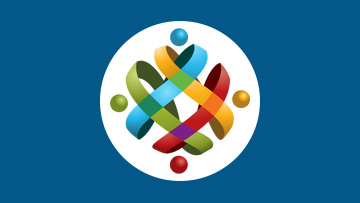
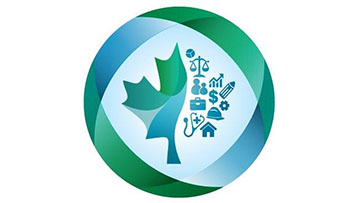

 Census counts
Census counts Fertility (births)
Fertility (births) Migration
Migration Mortality (deaths)
Mortality (deaths) Population estimates
Population estimates Population projections
Population projections
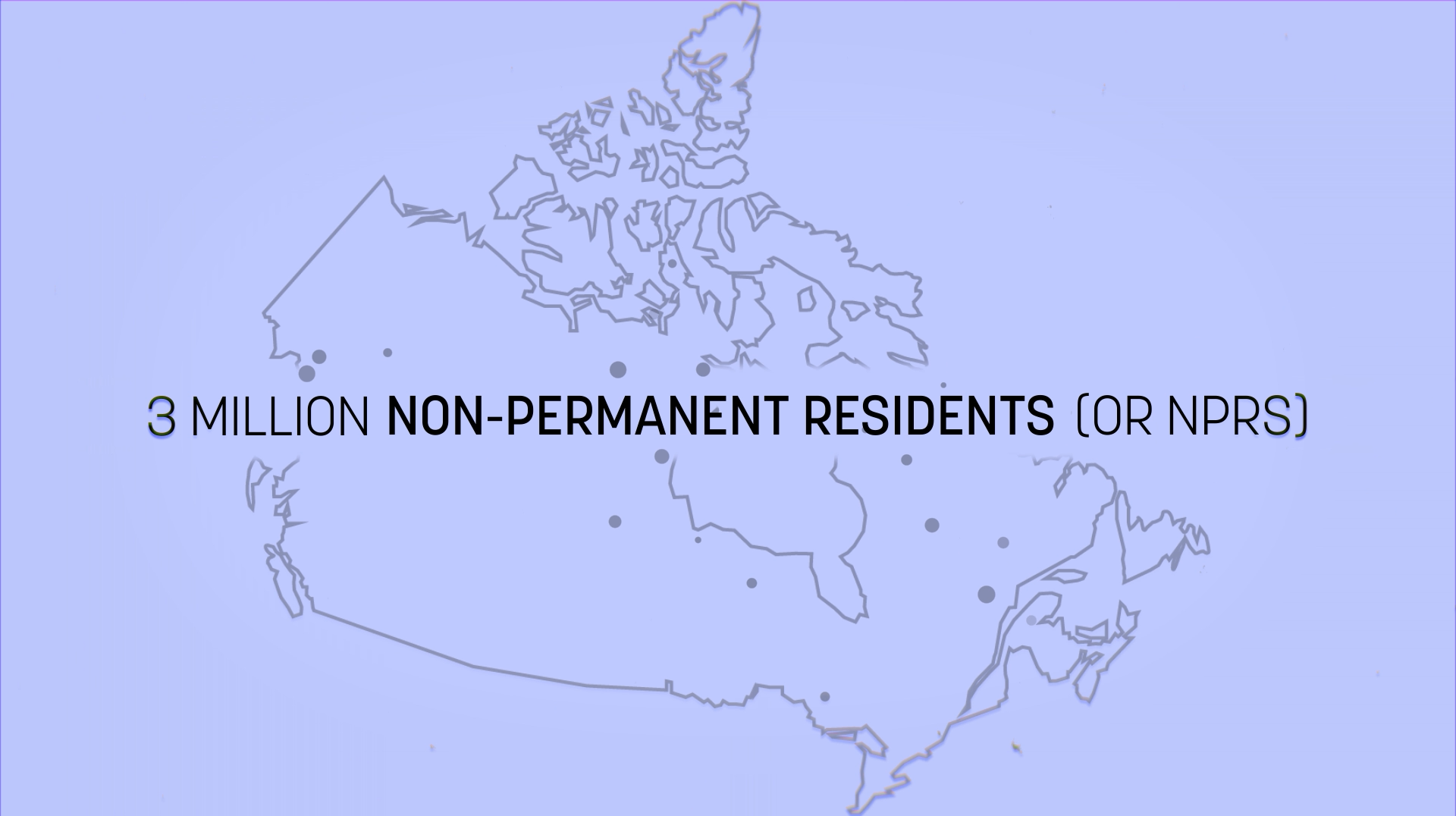
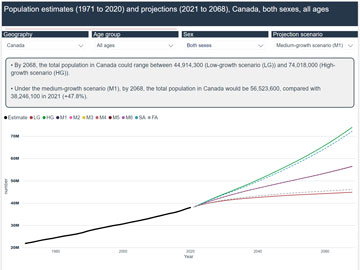


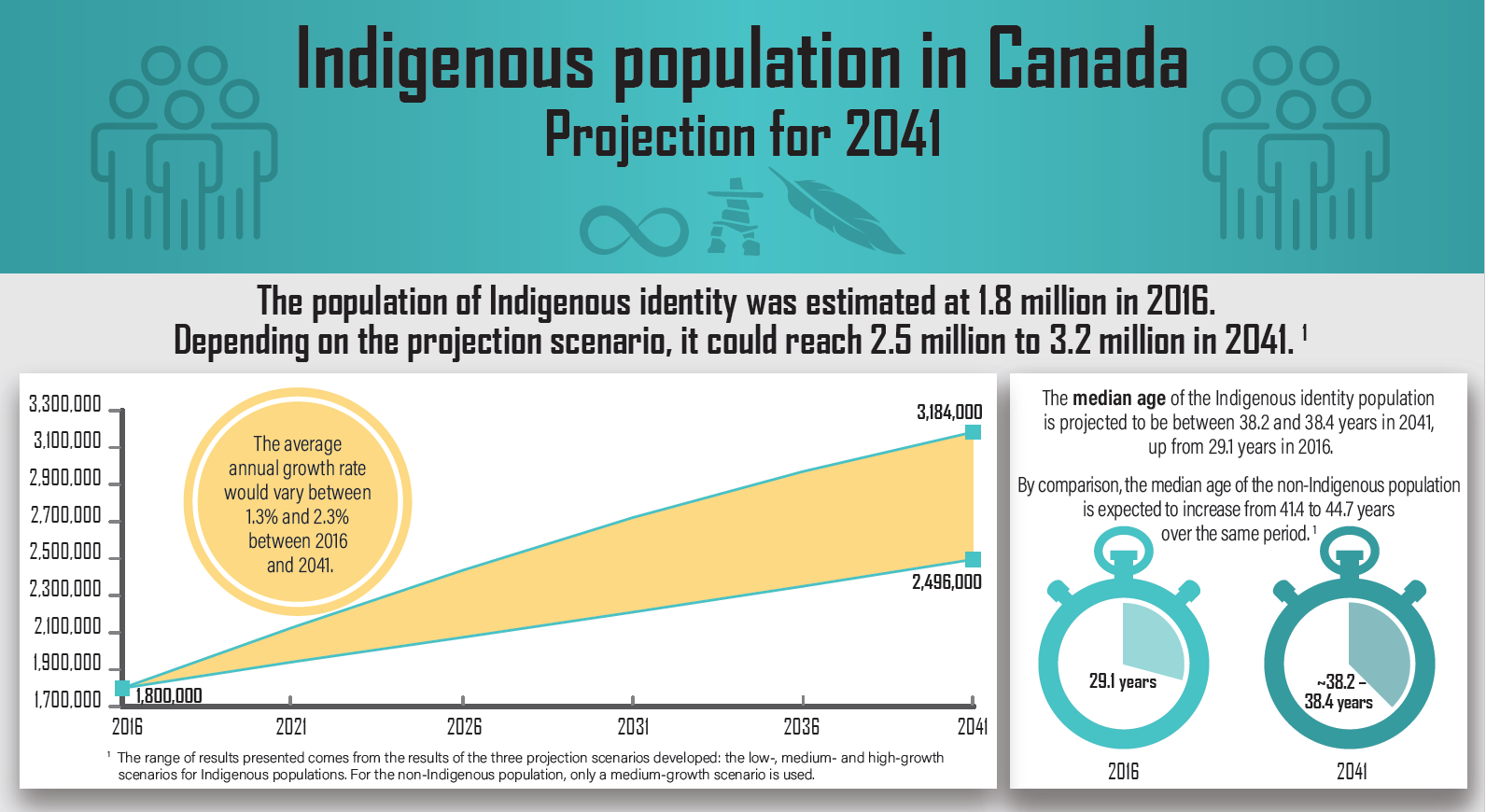



 Housing and construction price indexes
Housing and construction price indexes Industrial product price indexes
Industrial product price indexes Machinery and equipment price indexes
Machinery and equipment price indexes Services price indexes
Services price indexes



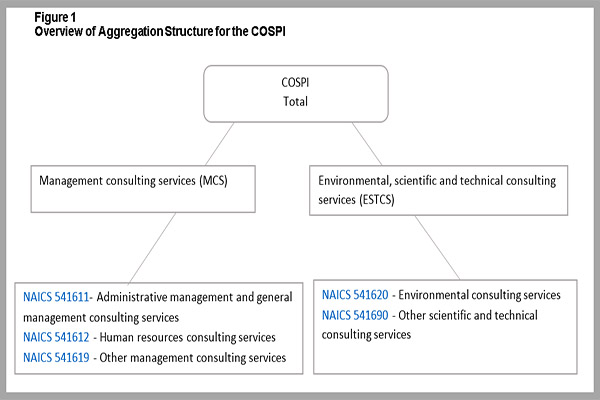




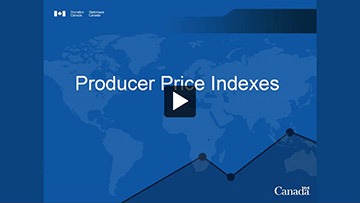





 Agriculture price indexes
Agriculture price indexes Consumer Price Index
Consumer Price Index Economic accounts price indexes
Economic accounts price indexes Intercity and international price comparisons
Intercity and international price comparisons International merchandise trade price indexes
International merchandise trade price indexes Producer price indexes
Producer price indexes

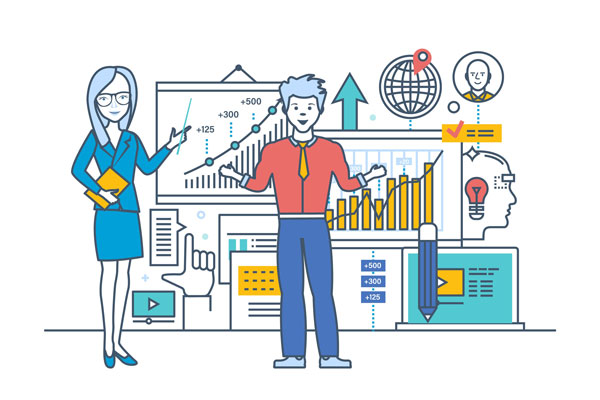




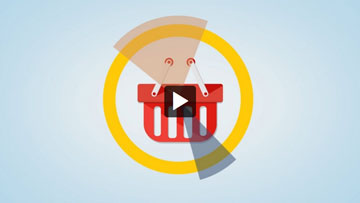
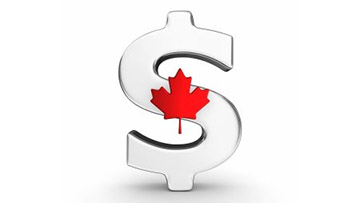
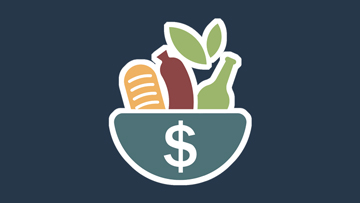

 The Daily
The Daily Data
Data Analysis
Analysis About CPI
About CPI Reference
Reference Frequently asked questions
Frequently asked questions

